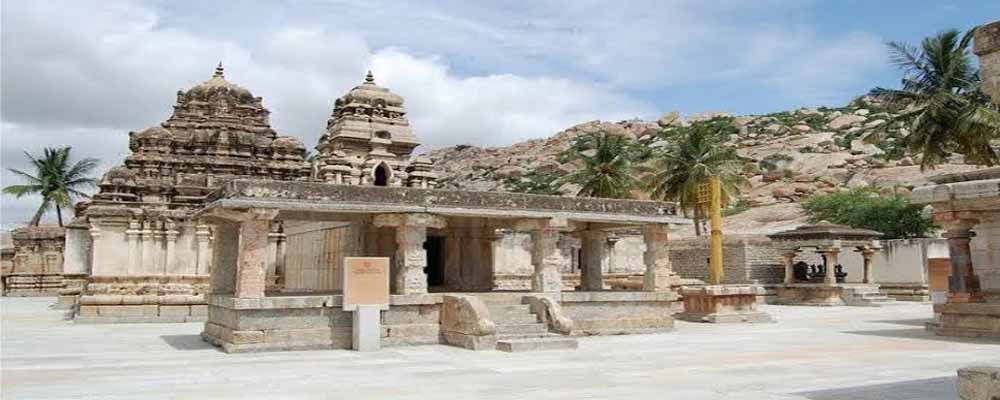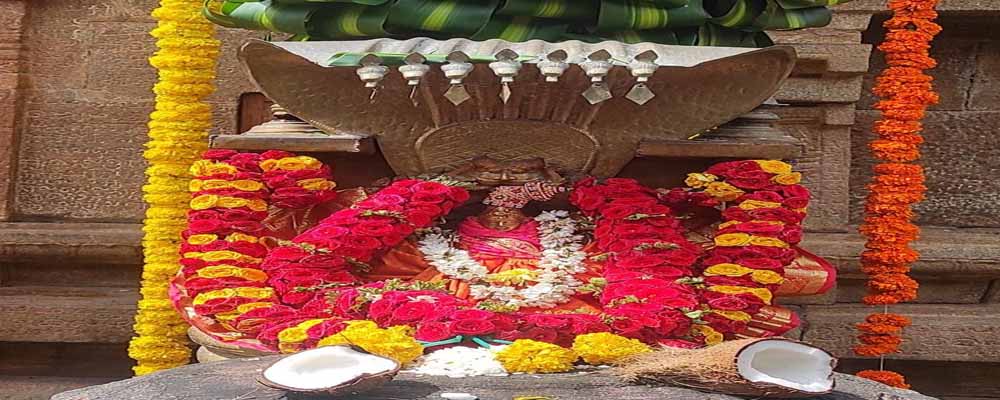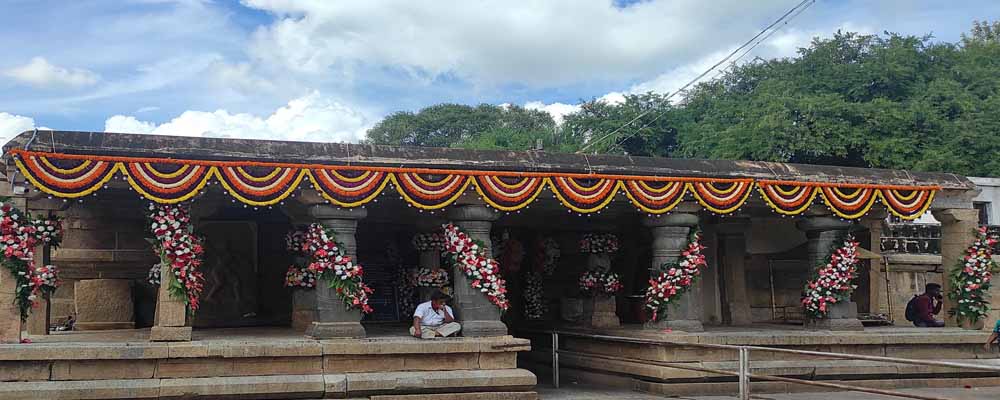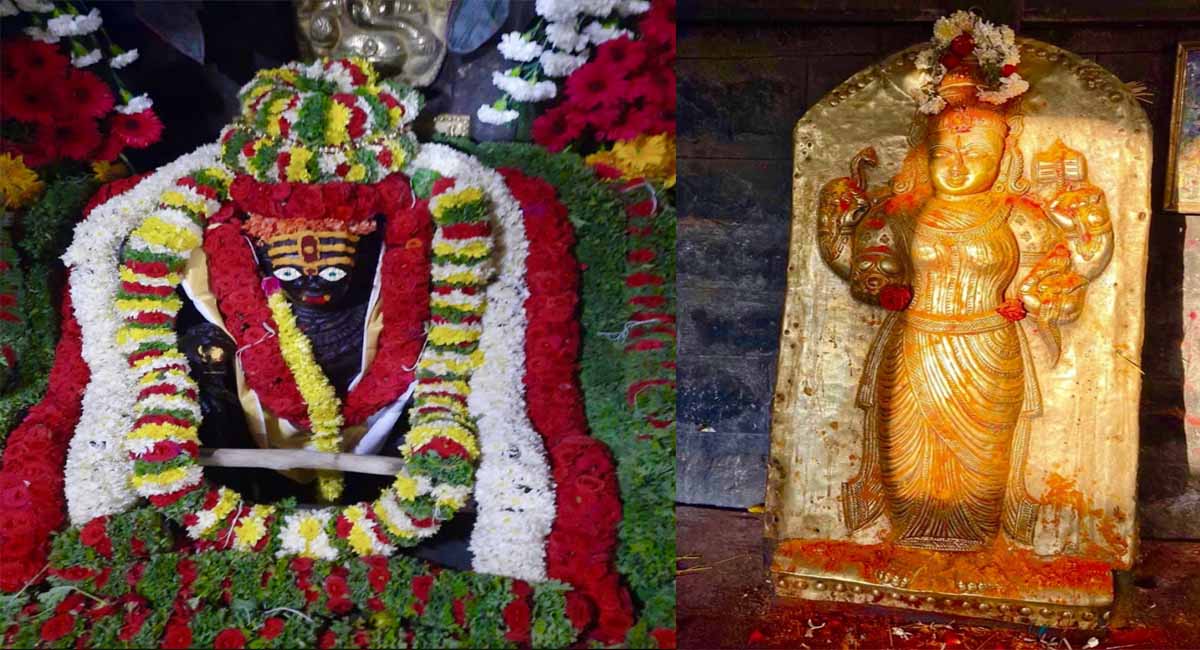Kolaramma Temple is a magnificent shrine located in the heart of Kolar, a historic town in the Indian state of Karnataka. It is one of the oldest and most revered temples in the region, attracting millions of devotees and tourists every year. In this article, we will take you on a journey through the history, architecture, and spiritual significance of Kolaramma Temple.
Goddess Kolaramma
Goddess Kolaramma, also known as Kolavalli, is the presiding deity of Kolaramma Temple. She is one of the most revered goddesses in the region and is believed to have the power to protect her devotees from harm and bless them with prosperity and happiness. According to legend, Goddess Kolaramma is an incarnation of Maa Durga, who took this form to defeat a demon who was terrorizing the region.
The temple is said to have been built around the 5th century CE and has been an important place of worship for centuries. Goddess Kolaramma is depicted in the temple’s sanctum sanctorum with eight hands, each holding a weapon, and riding a lion. The temple also has several other shrines dedicated to other deities, including Lord Ganesha, Lord Shiva, Lord Vishnu, and Lord Hanuman.
History of Kolaramma Temple
The origin of Kolaramma Temple can be traced back to the 9th century AD when the Rashtrakuta dynasty ruled over the region. The temple was built during the reign of the dynasty’s founder, Dantidurga, as a tribute to Goddess Kolaramma. According to legends, the temple was originally dedicated to Lord Shiva and was later converted to a temple of Goddess Kolaramma.
The temple has undergone several renovations and additions over the centuries, with the most recent one taking place in the 18th century. During the British era, the temple was neglected and fell into disrepair until it was restored to its former glory by the efforts of the local community.
Architecture of Kolaramma Temple

Kolaramma Temple is a classic example of the Dravidian style of architecture, which is characterized by its pyramid-shaped tower or Gopuram, intricate carvings, and sculptures. The temple’s main entrance is adorned with a towering Gopuram that is decorated with sculptures of gods, goddesses, and mythical creatures.
The temple’s sanctum sanctorum houses the main deity, Goddess Kolaramma, who is depicted in a seated position with four arms holding a trident, a sword, a skull, and a shield. The inner walls of the temple are adorned with beautiful carvings and paintings that depict scenes from Hindu mythology.
6 Hidden Facts of Kolaramma Temple
Kolaramma Temple is a popular tourist and pilgrimage destination in Kolar district, Karnataka. The temple’s history dates back to the 5th century CE and is an important cultural and historical site in the region. In addition to its religious significance, here are some hidden facts about Kolaramma Temple that are worth knowing:
- Architectural marvel: The temple’s architecture is a fine example of Dravidian style, with intricate carvings and sculptures that showcase the skills of the artisans of that era. The temple has been renovated several times over the years, but the original architectural elements have been well preserved.
- Unique deity: Goddess Kolaramma is unique in that she is depicted as having eight hands, each holding a weapon, and riding a lion. This form of the goddess is rarely seen in other temples in the region.
- Festival of lights: The temple hosts a grand festival of lights during the Deepavali or Diwali festival, which is one of the largest and most popular festivals in the region. The temple is decorated with thousands of lamps and lights, creating a magical and enchanting atmosphere.
- Underground chamber: The temple is said to have an underground chamber that was used to store valuables and treasures during times of war and invasion. It is said that the chamber is still intact, but access to it is restricted.
- Healing powers: It is believed that the water from the temple’s well has healing powers and can cure various ailments. Devotees often take the water as prasad or use it to perform abhishekam (a ritualistic bath of the deity).
- Geographical significance: Kolaramma Temple is located at the foot of a hill that is said to be a representation of Goddess Kolaramma herself. The hill is said to have been created by the goddess to protect the temple and its devotees.
These hidden facts make Kolaramma Temple a unique and fascinating place to visit, both for its religious and cultural significance and for its architectural and historical importance.
Significance of Kolaramma Temple

Kolaramma Temple is a symbol of the rich cultural and religious heritage of the region. It is believed to be a powerful source of positive energy and spiritual awakening, attracting devotees from far and wide. The temple is known for its miraculous powers and is believed to fulfill the wishes of its devotees.
The temple hosts several festivals and celebrations throughout the year, including the annual Rath Yatra, which is celebrated with great pomp and grandeur. The festival attracts thousands of devotees who come to witness the grand procession of the temple’s deities on a chariot.
Kolaramma Temple Timing
Kolaramma Temple is open to visitors every day from 6 am to 12 pm and from 4 pm to 8 pm. Visitors are required to follow the temple’s dress code and remove their footwear before entering the temple premises. Photography is not allowed inside the temple, but visitors can capture the temple’s beauty from the outside.
Kolaramma Temple Dress Code
Visitors are required to dress modestly when visiting the Kolaramma Temple. This means that shorts, sleeveless tops, and revealing clothing are not allowed. Visitors are also required to remove their footwear before entering the temple premises. It is recommended to wear comfortable, traditional Indian clothing that covers the body appropriately. Additionally, visitors should ensure that they are appropriately dressed while visiting any place of worship out of respect for the local customs and traditions.
Kolaramma Temple Rath Yatra
The Kolaramma Temple Rath Yatra is an annual festival celebrated with great enthusiasm and devotion in Kolar. During the festival, the presiding deity of the temple, Goddess Kolaramma, is taken out on a grand procession on a chariot. Thousands of devotees participate in the procession and offer prayers to the Goddess. The Rath Yatra is celebrated on the day of Chaitra Purnima, which usually falls in the months of March or April.
Kolaramma Temple Festivals

Kolaramma Temple celebrates several festivals throughout the year, including the Rath Yatra, Navaratri, and Deepavali. During Navaratri, the temple is decorated with beautiful flowers and lights, and special pujas are performed every day. On the final day of Navaratri, Vijayadashami, a grand procession is taken out in which the idol of Goddess Kolaramma is carried around the temple. The festival of Deepavali is also celebrated with great joy and fervor at the temple.
Kolaramma Temple Entry Fee
There is no entry fee to visit Kolaramma Temple. The temple is open to all visitors from 6 am to 12 pm and from 4 pm to 8 pm every day. However, donations are accepted at the temple, and devotees can offer their contributions as per their wish. Visitors are required to dress modestly and remove their footwear before entering the temple premises. Photography is not allowed inside the temple.
Kolaramma Temple Contact Number
The contact number for Kolaramma Temple is not readily available online. However, visitors can obtain information about the temple and its activities by visiting the temple in person or contacting the Kolar Tourism Department or Kolar district administration office for assistance. These offices can provide information regarding temple timings, festivals, and other relevant details.
How to Reach Kolaramma Temple

Kolaramma Temple is located in the heart of Kolar, a historic town in the Indian state of Karnataka. It is easily accessible by road and can be reached by private vehicles or public transportation. The nearest airport is Kempegowda International Airport in Bangalore, which is around 70 km away from the temple. The nearest railway station is Kolar Railway Station, which is around 3 km away from the temple. From there, visitors can hire a taxi or take a local bus to reach the temple.
Frequently Asked Questions
What is the history about Kolaramma temple in Kolar?
Kolaramma Temple has a rich history dating back to the 5th century CE. It is believed to have been built during the reign of the Ganga dynasty, and has undergone several renovations over the years. The temple is dedicated to Goddess Kolaramma, who is believed to be an incarnation of Goddess Shakti.
What is the Speciality of Kolar?
Kolar is a historic town located in the state of Karnataka, known for its rich cultural heritage and natural beauty. It is home to several ancient temples, including the famous Kolaramma Temple, as well as the Kolar Gold Fields, which were once one of the largest gold mines in India.
Who built Kolaramma temple?
The original builder of Kolaramma Temple is not known, but it is believed to have been constructed during the reign of the Ganga dynasty. The temple has undergone several renovations and additions over the years, with contributions from various rulers and patrons.
How many lingas are in a Kolar?
Kolar is home to several ancient temples dedicated to Lord Shiva, and many of these temples contain lingas (a symbol of Lord Shiva). It is not known exactly how many lingas are in Kolar, but some of the most famous Shiva temples in the region include the Someshwara Temple, the Kotilingeshwara Temple, and the Antaragange Temple.
What is the importance of Kolaramma temple?
Kolaramma Temple is an important religious and cultural site in Kolar, and is dedicated to Goddess Kolaramma, who is believed to be an incarnation of Goddess Shakti. The temple’s architecture, rich history, and unique deity make it a popular destination for both tourists and devotees, and its annual Rath Yatra festival is a major event in the region.

